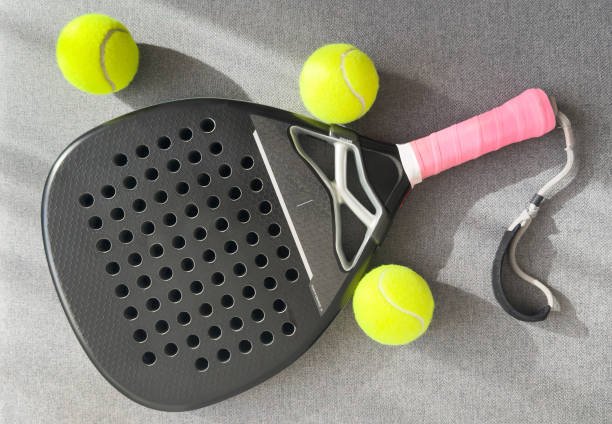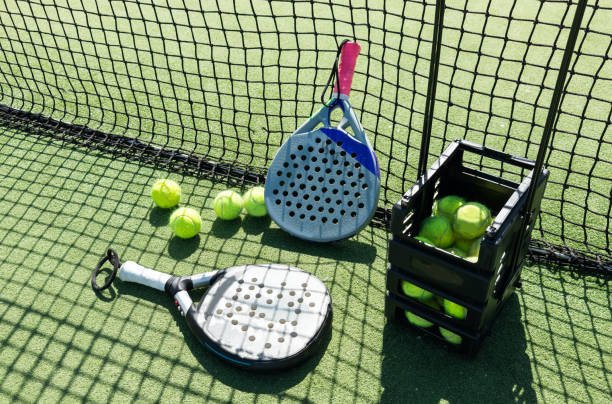Choosing the right ball for a sport may seem straightforward at first — just grab the ball and start playing. However, a closer look at sports like tennis and padel reveals a surprising complexity. While these two racquet sports may appear strikingly similar at first glance, particularly with their use of balls that share a similar color and material composition, there are subtle yet impactful differences that significantly influence the gameplay. These differences go beyond mere aesthetics and play a crucial role in the dynamics of each sport. Let’s dive deeper into the key distinctions between tennis balls and padel balls to understand how they affect the performance and experience of each game.
A Detailed Comparison Between Tennis Balls and Padel Balls: Key Differences and Their Impact on Gameplay

When discussing racquet sports like tennis and padel, many players and enthusiasts often overlook the most fundamental equipment: the ball. Although tennis and padel share many similarities in terms of their racquet-based gameplay, the balls used in each sport are designed with subtle but important differences that significantly affect how each game is played. This article aims to provide a comprehensive overview of the key differences between tennis balls and padel balls, including their size, weight, internal pressure, bounce, material, and more. Understanding these differences can help players of both sports choose the right equipment and refine their approach to each game.
Size Differences: Subtle Yet Significant
One of the most noticeable distinctions between tennis balls and padel balls is their size. While both balls are similar in appearance, tennis balls are slightly larger in diameter compared to padel balls.
- Tennis Balls: The diameter of a standard tennis ball typically ranges between 6.54 cm and 6.86 cm.
- Padel Balls: In contrast, padel balls have a slightly smaller diameter, typically ranging between 6.35 cm and 6.77 cm.
This slight size difference can have a noticeable impact on the feel of the game. While the difference may seem minimal, a larger tennis ball can be more challenging to control, especially when serving or during fast exchanges, while a smaller padel ball may require slightly more precision and skill in terms of ball placement. This size disparity is especially important when playing on a court that differs from tennis courts, such as the enclosed, smaller padel courts.
Weight Considerations: Almost Identical, But Not Quite

Both tennis and padel balls have nearly identical weights, but the subtle variations in weight still play a role in gameplay dynamics.
- Tennis Balls: Tennis balls typically weigh between 56.7 grams and 58.5 grams.
- Padel Balls: Padel balls are slightly lighter, ranging between 56 grams and 59.5 grams.
While this difference may not seem drastic, the weight of the ball influences its speed, control, and bounce. A padel ball that is just slightly lighter can feel more agile and responsive during rallies, making it easier to manipulate with finesse. Conversely, the slightly heavier tennis ball offers more stability and tends to carry through the air with greater velocity, especially during serving.
Internal Pressure: How It Affects Ball Behavior

Perhaps the most significant difference between tennis and padel balls lies in their internal pressure. This pressure determines the ball’s bounce, speed, and overall playing characteristics. The pressure in the ball is typically measured in pounds per square inch (psi), and here is where a notable variation occurs.
- Tennis Balls: Tennis balls are inflated to a higher internal pressure of around 14 psi. This higher pressure results in a firmer ball that bounces higher and travels faster when hit. The increased bounce and speed make tennis a high-intensity sport with rapid exchanges and aggressive shot-making.
- Padel Balls: Padel balls, on the other hand, have a lower internal pressure, typically ranging between 10 psi and 11 psi. This reduction in pressure results in a ball that bounces less and travels slower, which affects the pace of the game. With a lower bounce, padel players must rely more on placement, strategy, and agility rather than sheer power. This slower pace encourages longer rallies and requires more precise shot-making.
The difference in internal pressure also contributes to the feel of the ball off the racquet. Players using padel balls will often notice a softer, more controlled hit, while tennis balls produce a more “explosive” feel due to their higher pressure.
Bounce: Key to Game Strategy
Bounce is a critical aspect of both tennis and padel, directly affecting how players approach rallies, shot selection, and strategy. Due to the lower internal pressure, padel balls have a distinctly different bounce compared to tennis balls.
- Tennis Balls: The bounce of a tennis ball is typically higher, ranging from 135 cm to 147 cm. This high bounce allows players to take more aggressive shots, and fast, vertical returns are a hallmark of the sport. The higher bounce also makes it easier for players to generate power and hit heavy topspin shots.
- Padel Balls: The bounce of a padel ball is slightly lower, with an average range of 135 cm to 145 cm. The lower bounce is a direct result of the reduced internal pressure and has a significant impact on how the game is played. With a lower bounce, padel players are often forced to play with more finesse and control, relying on quick reflexes and strategic shot placement rather than just power and speed.
The slower, lower bounce of padel balls also means that rallies last longer, requiring players to focus on stamina and consistency rather than just quick, high-intensity exchanges. This slower pace encourages a more tactical and cerebral approach to the game.
Material and Construction: Durability and Performance
While both tennis and padel balls are made from similar materials, such as rubber and felt, the construction of these balls is optimized for the unique needs of each sport.
- Tennis Balls: Tennis balls are often made with high-quality felt that provides durability while allowing the ball to grip the strings of the racquet and generate spin. The outer material is designed to withstand the impact of hard hits, especially on a larger court surface, which results in wear and tear over time.
- Padel Balls: Padel balls are also constructed with rubber and felt but are designed to withstand the smaller, more enclosed playing environment of padel courts. They are typically inflated to a slightly lower pressure, which means they lose their bounce more quickly than tennis balls. Additionally, padel balls are designed to offer a softer, less aggressive feel off the racquet, which suits the slower pace of the sport.
While both balls have a similar lifespan, the key difference in construction lies in the overall durability and the manner in which each ball responds to hitting and bouncing. Padel balls tend to lose their ideal playing characteristics (such as bounce and responsiveness) quicker than tennis balls due to the lower pressure inside.
Color Differences: Aesthetic and Practical Considerations
Color may not impact gameplay directly, but it’s worth noting the variations in the color schemes of tennis and padel balls.
- Tennis Balls: Tennis balls are typically bright yellow, which ensures high visibility on the court, especially in outdoor conditions or under lights. The bright yellow color also helps players track the ball during fast exchanges.
- Padel Balls: Padel balls can come in a variety of colors, with yellow, white, and orange being the most common. The color choice is mainly an aesthetic preference, though yellow is often used for visibility, similar to tennis balls. The different color options are also a reflection of the sport's evolving popularity and appeal.
Conclusion: Understanding the Impact of Ball Differences on Gameplay
In summary, while both tennis balls and padel balls share many similarities, such as their overall appearance and construction materials, there are distinct differences that significantly impact how each game is played. The size, weight, internal pressure, bounce, and even the color of the balls all contribute to the unique nature of each sport.
For tennis, the larger ball, higher pressure, and faster bounce make the game more dynamic, fast-paced, and aggressive. Players can hit powerful serves, fast forehands, and high bounces, with an emphasis on speed and power.
On the other hand, padel’s smaller ball, lower pressure, and reduced bounce create a slower, more strategic game where placement, agility, and endurance are paramount. The focus shifts from raw power to controlled, strategic shot-making, making it a sport that requires more finesse and tactical awareness.
By understanding these key differences, players can make more informed decisions about which sport to play based on their preferences for pace, strategy, and the type of ball used. Whether you’re a seasoned tennis player looking to try padel or a beginner exploring both sports, knowing the nuances of each ball will help enhance your game and overall experience.